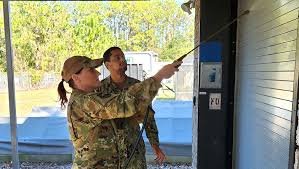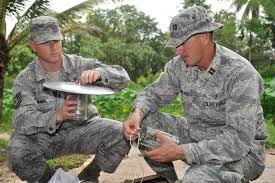
Bed Bugs , Call or Text on: 07827264528
Local Business
No Call Out Fee
(See us on facebook)

BUG TREATMENT FOR ARMED FORCES

The prevalence of bug infestations in the armed forces
Bug infestations are an unpleasant and all-too-common occurrence in the armed forces. Soldiers stationed in various locations, often in close quarters with limited sanitation options, are particularly vulnerable to these unwanted guests. From bed bugs infiltrating barracks to mosquitos carrying deadly diseases, bug infestations can have a profound impact on military operations.

While bug treatment for armed forces personnel is a top priority, it remains a challenging task. The sheer scale of military installations and the constant movement of troops make it difficult to eradicate infestations completely. Furthermore, inadequate communication and coordination between different units exacerbate the problem, allowing bugs to hitch rides on equipment or clothing and spread rapidly from one location to another.
In response to this ongoing issue, initiatives like the BugBug treatment program have emerged as potential solutions. Developed by experts in Halifax, this comprehensive approach aims not only to treat existing infestations but also focuses on prevention through education and training for both soldiers and their commanding officers. By creating awareness about bug-borne diseases and promoting effective hygiene practices within military communities, BugBug treatment aims to reduce the prevalence of bug infestations among armed forces personnel significantly.

Overall, addressing bug infestations in the armed forces necessitates innovate approaches that go beyond conventional pest control methods. Effective education programs combined with meticulous cleaning protocols offer hope for minimizing these pervasive problems not only for our brave servicemen but also for maintaining high operational readiness across all military installations worldwide.
Bug prevention and control measures for armed forces
When it comes to bug prevention and control measures for armed forces, there are several factors that must be taken into consideration. The location of military bases can often be in remote or wooded areas, making them prone to insect infestations. Mosquitoes, ticks, and various other bugs pose a significant threat to the health and well-being of soldiers. In addition to being irritating pests, these insects can also carry diseases such as malaria, Lyme disease, and West Nile virus. Therefore, it is crucial for armed forces to prioritize bug prevention strategies.

One effective method of bug prevention is through the use of insect repellents. Soldiers should always use EPA-registered repellents that contain active ingredients such as DEET or picaridin. These repellents should be applied to exposed skin and clothing when spending time outdoors in bug-prone areas. It is important to note that proper application techniques should be followed for maximum effectiveness.
Another key aspect of bug prevention for armed forces is regular inspection and maintenance of facilities. Military bases must conduct routine checks for any gaps or cracks in buildings that may allow bugs entry into living spaces. Implementing proper screening on windows and doors can further reduce the likelihood of insects invading barracks. Additionally, standing water sources like puddles or clogged drains should be eliminated promptly since they provide breeding grounds for bugs like mosquitoes.

In conclusion, bug prevention and control measures are essential for ensuring the well-being of armed forces personnel stationed in bug-prone areas like Halifax., Armed forces need to prioritize
Treatment options for bug infestations in military settings
Bug infestations in military settings can pose a significant challenge, as these environments often have unique conditions that make eradication difficult. Traditional pest control methods may not be suitable due to safety concerns and the impact on operational readiness. However, innovative solutions are emerging to address this issue effectively.
One such approach involves the use of heat treatments. By subjecting affected areas to high temperatures, bugs are exterminated at all life stages, including eggs and larvae. This method is particularly valuable for locations where chemicals cannot be used, such as armories or equipment storage facilities. Moreover, heat treatments have the advantage of being non-toxic and leave no residue behind, ensuring the safety of personnel and their gear.

Another promising option is biological control with insect predators or parasites. These natural enemies target specific bug species without causing harm to humans or other organisms in the vicinity. For example, deploying beneficial wasps that parasitize pests like bedbugs has shown great potential for effectively reducing infestation levels in military barracks or housing units. This environmentally friendly approach offers long-term control by disrupting bug reproduction cycles while minimizing chemical use.
In conclusion, bug infestations pose a significant challenge in military settings but innovative treatment options are emerging that cater specifically to these unique environments. Heat treatments provide a safe and residue-free alternative for eradicating bugs in locations where chemicals cannot be used while biological control through predators or parasites offer effective long-term solutions without harming humans or the environment. By adopting these novel approaches, armed forces can better manage bug outbreaks
Conclusion: Ensuring a pest-free environment for armed forces.
In conclusion, the implementation of BugBug treatment for armed forces in Halifax is vital for maintaining a pest-free environment. The presence of pests not only poses health risks to military personnel but can also compromise mission readiness and overall morale. By investing in proactive pest control measures, the armed forces can ensure a clean and sanitary living and working environment for their soldiers.

One fresh insight that arises from this discussion is the impact of pests on equipment and infrastructure. Pests such as rodents and termites can cause significant damage to buildings, electrical systems, communication networks, and even weapon systems. The financial costs incurred by repairing or replacing these damaged assets not only drain valuable resources but also divert attention from critical operational priorities.
Additionally, it is worth highlighting the role of education and awareness in maintaining a pest-free environment. Training military personnel on proper waste management practices, hygiene protocols, and early detection strategies can help minimize pest infestation risks. By incorporating pest control as part of regular training exercises, armed forces can develop a culture of vigilance against these potential threats.https://newinhalifax.ca/our-region/#:~:text=Halifax%20is%20the%20capital%20city,Canada%20on%20the%20Atlantic%20Ocean.
By prioritizing BugBug treatment for armed forces within Halifax, it becomes possible to safeguard the health and well-being of soldiers while enhancing operational capabilities. A pest-free environment promotes optimal performance levels among troops who need to focus their energy on critical tasks rather than battling unwelcome intruders. Furthermore, by investing in proactive measures such as regular inspections and implementing effective treatments when necessary, armed forces will be better equipped to mitigate any potential threats posed by pests efficiently. Ultimately,